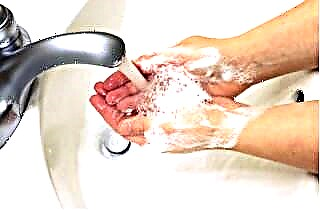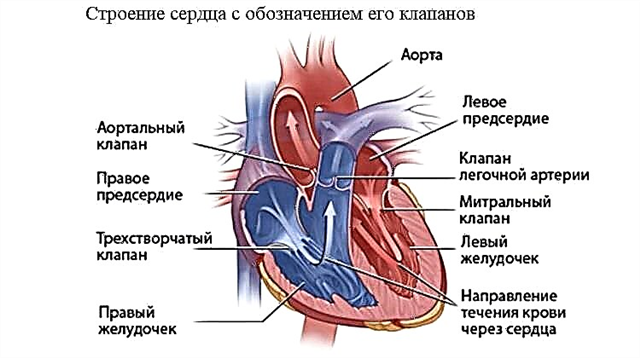In the body of any person, billions of different microbes find themselves a haven. Some of them are friendly and help the person to adapt to the environment. But most are not useful for us, they just cannot harm an organism with strong immunity. And when the body's defenses weaken for any reason, pathogenic microbes begin a real attack and can cause many problems. One such potentially dangerous bacteria is Staphylococcus aureus.
Meet staphylococcus
 Most often, Staphylococcus aureus settles in the nose. First, the easiest way for him to get there. And secondly, it is humid and warm there - an ideal environment for growth and reproduction. Bacteria generally prefer mucous membranes, which is why the first symptoms of various diseases usually appear on them.
Most often, Staphylococcus aureus settles in the nose. First, the easiest way for him to get there. And secondly, it is humid and warm there - an ideal environment for growth and reproduction. Bacteria generally prefer mucous membranes, which is why the first symptoms of various diseases usually appear on them.
In a healthy person, Staphylococcus aureus may not manifest itself at all. Although its carriers, according to statistics, are, according to various sources, from 15 to 50% of the adult population of the Earth. Moreover, among medical workers, this percentage is consistently high - 35-40%. Staphylococcus aureus is a permanent inhabitant of hospitals and it is easiest to "pick up" it in a medical facility.
The vitality of this microorganism is simply amazing. It does not die in medical alcohol, quickly develops resistance to antibiotics, when treated with hydrogen peroxide, it breaks down and assimilates oxygen, and remains active for a long time in direct sunlight.
The only remedy that he absolutely cannot stand is ordinary brilliant green. Under the influence of aniline dyes, the bacterium quickly dies.
It can only be detected by laboratory tests. The most effective is bacterial inoculation of mucous discharge from the nose and analysis of feces for dysbiosis. If staphylococcus is sown in the amount of 104then prophylactic treatment is sufficient. If the degree of concentration of pathogenic microorganisms is higher, antibiotics will have to be used.
Reasons for activation
 The main reason for the activation of Staphylococcus aureus is a drop in immunity. An additional factor is damage to the integrity of the skin. And their combination is one hundred percent guarantee that the microbe will immediately manifest itself. Also, its increased activity is facilitated by:
The main reason for the activation of Staphylococcus aureus is a drop in immunity. An additional factor is damage to the integrity of the skin. And their combination is one hundred percent guarantee that the microbe will immediately manifest itself. Also, its increased activity is facilitated by:
- severe hypothermia;
- recent viral or respiratory illness;
- a sharp change in climatic conditions;
- long-term or excessive use of antibiotics;
- the use of vasoconstrictor nasal drops;
- wounds or sores on the nasal mucosa;
- chronic diseases of the nose and sinuses: rhinitis, sinusitis, frontal sinusitis;
- exacerbation of chronic diseases of other organs.
At the slightest weakening of immunity, Staphylococcus aureus blooms in the nose of hard-core smokers. Its symptoms begin to appear in almost 30% of female carriers on certain days of the menstrual cycle.
The main symptoms
At first, an exacerbation of Staphylococcus aureus can be confused with the flu - it has very similar symptoms:
- signs of general intoxication: nausea, weakness, headache;
- increase in body temperature: from slight to severe;
- redness of the skin around the nose;
- profuse discharge of liquid transparent mucus.
 After a while, multiple abscesses begin to appear on the mucous membrane and around the nostrils. This bacterium secretes a fat-breaking enzyme (lipase), which provokes inflammation of the hair follicles of the villi growing on the mucous membrane.
After a while, multiple abscesses begin to appear on the mucous membrane and around the nostrils. This bacterium secretes a fat-breaking enzyme (lipase), which provokes inflammation of the hair follicles of the villi growing on the mucous membrane.
Gradually filling with pus, the bubbles burst, forming wet wounds and sores. And the infection, thus, spreads further and further. With proper treatment, the wounds are covered with a crust, dry up and close. When no measures are taken, a wide area can be affected by purulent scabs, and if hygiene measures are not followed, they spread to other parts of the body: in the groin, armpits, folds of the skin.
If you do not catch and cure staphylococcus at this stage, it penetrates further and can cause serious complications. The most harmless of them is acute inflammation of the sinuses of the nose (sinusitis, sinusitis, frontal sinusitis). These diseases at an early stage are well treated with antibiotics, but if they are started, they lead to purulent otitis media and even inflammation of the meninges.
Getting with infected mucus that flows through the nasopharynx into the gastrointestinal tract, Staphylococcus aureus feels great there too. It continues to multiply actively, causing dysbiosis and provoking inflammatory processes in the internal organs.
If untreated, they gradually develop: gastroduodenitis, colitis, cystitis, cholangitis, hepatitis, etc. So there is no need to hesitate and treatment should be started as soon as the first symptoms appear.
Treatment features
Due to the high degree of resistance of staphylococcus to traditional antiseptics and some antibiotics, it must be treated correctly. Otherwise, time will not only be wasted, but also give bacteria the opportunity to adapt to new conditions. Therefore, if the symptoms indicate Staphylococcus aureus, then it is better to get tested and seek medical help.
 The doctor will select the most effective drugs that will completely eliminate pathogenic microorganisms, and not only the external manifestations of their presence. Moreover, with the wrong treatment, it is possible:
The doctor will select the most effective drugs that will completely eliminate pathogenic microorganisms, and not only the external manifestations of their presence. Moreover, with the wrong treatment, it is possible:
- the emergence of strains of staphylococcus resistant to the effects of even very strong antibiotics;
- the rapid spread of infection throughout the body through the lymph flow and circulatory system;
- the development of purulent inflammatory processes in the sinuses;
- the occurrence of serious complications: severe intoxication, sepsis, extensive pustular skin lesions, furunculosis, endocarditis, meningitis.
That is why, in laboratory studies, the sensitivity of the bacteria to various types of drugs is simultaneously checked. The specific remedy in each case is prescribed by the doctor individually.
Medicines
Although antibiotics are the main weapon against staphylococcus, their use alone is not enough for a quick recovery. In addition to antibacterial drugs, the treatment complex also includes a number of other drugs that help eliminate lesions:
- antihistamines - are the prevention of allergies to antibiotics and at the same time reduce swelling and the amount of mucous discharge from the nose;
- bacteriophages - specially developed liquid preparations in which microorganisms aggressive to Staphylococcus aureus are present;
- antiseptic - the most effective solution is brilliant green, with which ulcers and wounds are treated several times a day until dry crusts form;
- immunomodulators - stimulating the body's defenses, increasing its overall resistance, accelerating the healing process.
During the entire period of treatment, it is necessary to avoid overwork and try to adhere to a healthy diet rich in vitamins, minerals and trace elements. If all the conditions listed above are met, it is possible to get rid of the disease in 10-14 days.
Traditional methods
Treatment of Staphylococcus aureus by folk methods does not give such quick results as the use of pharmaceutical preparations, but it can also be effective if you maintain an integrated approach to solving the problem. It is advisable to use at the same time:
- Poultices and compresses.They should be made of sterile gauze or cotton pads dipped in a solution of furacilin or decoctions of medicinal herbs: calendula, chamomile, celandine, elecampane, St. John's wort, oak bark. This is at the same time an antiseptic treatment, anti-inflammatory measures and allows you to soften the crusts, facilitate their passage. Poultices should be done 2-3 times a day.
- White clay. It is one of the most powerful natural antiseptics and has a high absorption capacity. Dries wounds, heals them, relieves inflammation, collects pus and toxins. Prevents further spread of infection.
 Essential oils. Oils of some plants are harmful to almost all pathogenic microorganisms, including Staphylococcus aureus. The most effective are: eucalyptus, juniper, celandine, tea tree, cedar, fir, thuja, ylang-ylang. Oils applied to a cotton swab should be used to treat the skin within a radius of 1 cm from the wounds, lubricate the crusts. It is better not to smear sores and open wounds - there will be a strong burning sensation and a burn may result.
Essential oils. Oils of some plants are harmful to almost all pathogenic microorganisms, including Staphylococcus aureus. The most effective are: eucalyptus, juniper, celandine, tea tree, cedar, fir, thuja, ylang-ylang. Oils applied to a cotton swab should be used to treat the skin within a radius of 1 cm from the wounds, lubricate the crusts. It is better not to smear sores and open wounds - there will be a strong burning sensation and a burn may result.- Detoxification. During the fight against the disease, it is very important to remove the formed toxins from the body as soon as possible. It helps to make a warm drink. And if you drink decoctions of useful plants, you can get an additional effect. To strengthen the immune system and raise the body's defenses will help: green or ginger tea, rosehip broth, horsetail, chamomile, hibiscus.
- Strengthening the immune system. You can dramatically raise immunity with a shock dose of vitamin C, which is most easily obtained from citruses, sour berries (currants, gooseberries, cranberries). Extracts of ginseng, eleutherococcus, echinacea well increase the defenses. Figs, persimmons, avocados, green apples will help you quickly replenish the stock of trace elements.
The advantage of traditional methods of treatment is that they have no contraindications and can be used even during pregnancy. In addition, antibacterial drugs are not used, which means that staphylococcus aureus cannot develop resistance to them and a more aggressive strain will not appear in the body.
With proper systemic treatment, the symptoms disappear completely by the end of the second week.
Prevention measures
Infection with Staphylococcus aureus is possible only by contact. It is not transmitted by air. Therefore, infection can be avoided by observing basic rules of personal hygiene. If the disease is already in the active stage, you must try to prevent it from spreading to other parts of the body and not infecting others. For this it is enough:
 do not touch wounds and scabs with your hands;
do not touch wounds and scabs with your hands;- handle them only with disposable instruments, preferably with gloves;
- after processing, wrap all cotton wool, sticks and other materials in cellophane and discard immediately;
- wash hands before and after performing medical procedures, treat them with an antiseptic;
- use separate dishes, bed linen and a towel until complete recovery;
- wash your hands before eating and after using the toilet;
- at least once a day, wipe the door handles, handsets and other items that all family members touch with an antiseptic.
As a prophylaxis (if the family has a patient with exacerbation of staphylococcus), you can take immunomodulators or multivitamins. Do not forget that the best way to strengthen immunity, and therefore to fight Staphylococcus aureus, is to give up bad habits and a healthy lifestyle.

 Essential oils. Oils of some plants are harmful to almost all pathogenic microorganisms, including Staphylococcus aureus. The most effective are: eucalyptus, juniper, celandine, tea tree, cedar, fir, thuja, ylang-ylang. Oils applied to a cotton swab should be used to treat the skin within a radius of 1 cm from the wounds, lubricate the crusts. It is better not to smear sores and open wounds - there will be a strong burning sensation and a burn may result.
Essential oils. Oils of some plants are harmful to almost all pathogenic microorganisms, including Staphylococcus aureus. The most effective are: eucalyptus, juniper, celandine, tea tree, cedar, fir, thuja, ylang-ylang. Oils applied to a cotton swab should be used to treat the skin within a radius of 1 cm from the wounds, lubricate the crusts. It is better not to smear sores and open wounds - there will be a strong burning sensation and a burn may result. do not touch wounds and scabs with your hands;
do not touch wounds and scabs with your hands;

